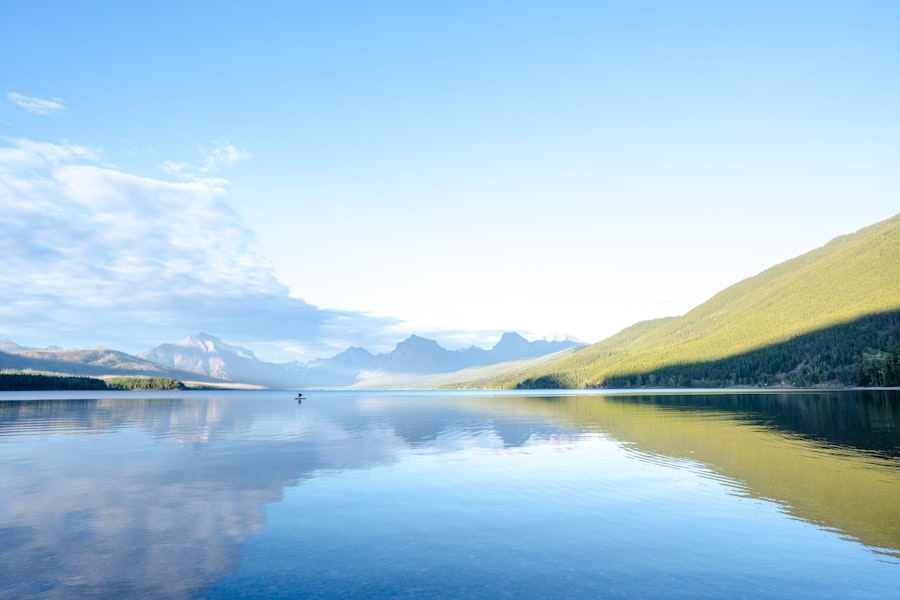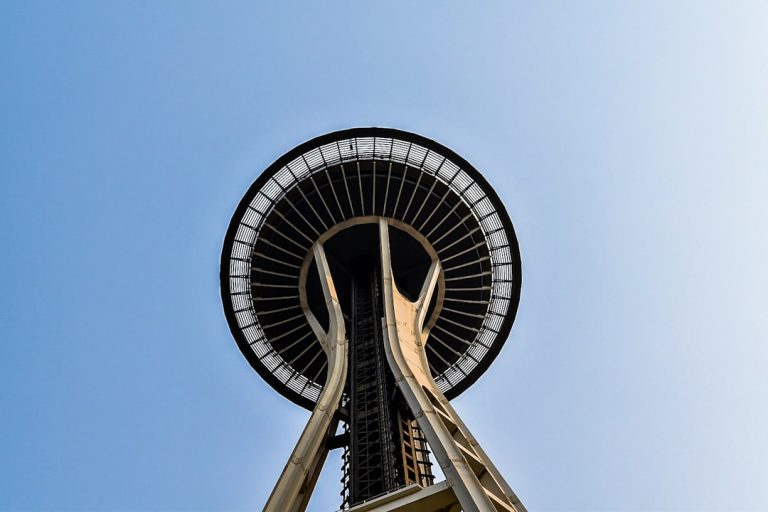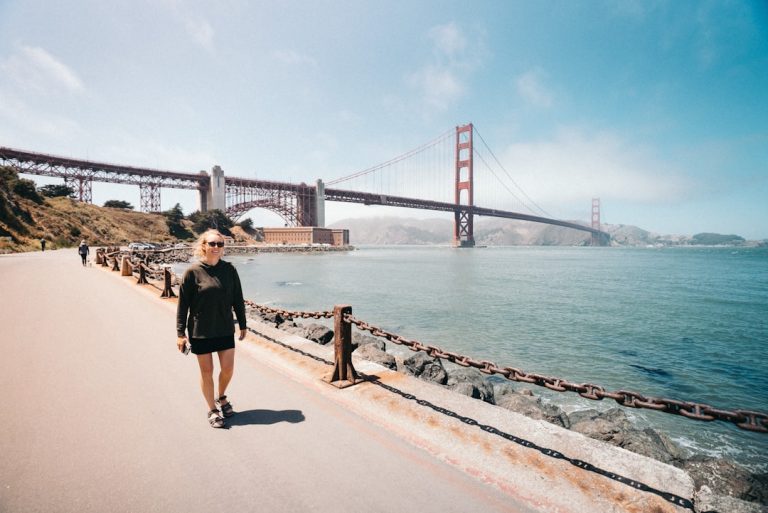
Montana, often referred to as “Big Sky Country,” is a state that boasts an extraordinary and diverse landscape, characterized by its vast open spaces, majestic mountains, and pristine rivers. The state’s geography is a tapestry woven from the rugged Rocky Mountains, rolling plains, and expansive forests. The northern Rocky Mountains dominate the western part of the state, with peaks that soar over 12,000 feet, such as Granite Peak, the highest point in Montana.
These mountains are not just visually stunning; they also create a unique microclimate that supports a rich variety of flora and fauna. The valleys between these peaks are often dotted with glacial lakes, such as Flathead Lake, which is one of the largest natural freshwater lakes in the western United States. Wildlife in Montana is as diverse as its landscape.
The state is home to an array of species, including grizzly bears, wolves, elk, and bighorn sheep. The presence of these animals is a testament to the state’s commitment to conservation and the preservation of natural habitats. For instance, the Greater Yellowstone Ecosystem, which extends into Montana, is one of the last intact ecosystems in the continental United States.
This area is not only crucial for wildlife but also serves as a living laboratory for scientists studying ecological processes. Birdwatchers can delight in spotting species like the American bald eagle or the endangered peregrine falcon, while anglers can find themselves fishing alongside moose in the serene waters of the many rivers and streams that crisscross the state.
Key Takeaways
- Montana’s landscape is unique, featuring vast open spaces, rugged mountains, and diverse wildlife.
- Must-see places in Montana include Yellowstone National Park, Glacier National Park, and the iconic Going-to-the-Sun Road.
- Montana’s rich history is showcased in historical landmarks such as the Little Bighorn Battlefield and the Museum of the Rockies.
- Outdoor enthusiasts can enjoy hiking in the Bob Marshall Wilderness, fishing in the Bighorn River, and skiing at Big Sky Resort.
- Cultural attractions in Montana include art galleries in Bozeman, music festivals in Missoula, and local cuisine featuring bison and huckleberries.
- Hidden gems in Montana include the ghost town of Garnet, the quirky town of Livingston, and the stunning Kootenai Falls.
Must-See Places: National Parks and Natural Wonders in Montana
Montana is home to some of the most breathtaking national parks and natural wonders in the United States. Glacier National Park, often referred to as the “Crown of the Continent,” is a prime example of Montana’s natural beauty.
The iconic Going-to-the-Sun Road offers visitors a scenic drive that showcases the park’s dramatic vistas, including Logan Pass, where one can often see mountain goats grazing on rocky outcrops. The park’s rich biodiversity includes over 1,000 species of plants and numerous animal species, making it a haven for nature enthusiasts. Another must-see destination is Yellowstone National Park, which extends into Montana and is renowned for its geothermal features and wildlife.
The park’s famous geysers, such as Old Faithful, draw millions of visitors each year who come to witness the spectacular eruptions. Beyond its geothermal wonders, Yellowstone is also a sanctuary for wildlife; bison roam freely across the plains while wolves and bears inhabit the more rugged terrains. The Lamar Valley is particularly famous for wildlife watching, offering opportunities to see herds of bison and elk as well as predators like wolves in their natural habitat.
The combination of geological marvels and abundant wildlife makes Yellowstone a cornerstone of Montana’s natural attractions.
Montana’s Rich History: Historical Landmarks and Museums

Montana’s history is rich and varied, shaped by Native American cultures, European exploration, and the westward expansion of settlers. Historical landmarks throughout the state tell the story of this complex past. One significant site is Fort Benton, known as the “Birthplace of Montana.” Established in 1846 as a fur trading post, Fort Benton played a crucial role in the development of trade routes and served as a gateway for settlers heading west.
Today, visitors can explore the fort’s reconstructed buildings and learn about its significance through exhibits at the Fort Benton Museum. Another important historical site is Virginia City, a well-preserved ghost town that was once a bustling gold mining camp during the 1860s. The town offers a glimpse into life during Montana’s gold rush era with its wooden storefronts and historic buildings.
Visitors can take guided tours to learn about the lives of miners and their families or explore the many shops that sell handcrafted goods and local art. Additionally, museums such as the Museum of the Rockies in Bozeman provide insights into Montana’s prehistoric past with extensive dinosaur fossil collections and exhibits on Native American history. These landmarks and museums serve as vital resources for understanding Montana’s heritage and cultural evolution.
Outdoor Adventures: Hiking, Fishing, and Skiing in Montana
| Activity | Popular Locations | Season |
|---|---|---|
| Hiking | Glacier National Park, Yellowstone National Park, Beartooth Mountains | Spring, Summer, Fall |
| Fishing | Missouri River, Bighorn River, Flathead Lake | Spring, Summer, Fall |
| Skiing | Big Sky Resort, Whitefish Mountain Resort, Bridger Bowl | Winter |
Montana’s diverse landscape provides an abundance of outdoor activities that cater to adventure seekers year-round. Hiking is one of the most popular pastimes in the state, with trails ranging from easy walks to challenging backcountry routes. The Bob Marshall Wilderness Area offers some of the most pristine hiking experiences in Montana, featuring over a million acres of untouched wilderness.
Hikers can traverse trails that lead to stunning vistas, alpine lakes, and hidden waterfalls while encountering wildlife along the way. The challenge of navigating this rugged terrain rewards adventurers with breathtaking views and a sense of solitude that is hard to find elsewhere. Fishing enthusiasts will find Montana to be a paradise for angling.
The state’s rivers are teeming with trout, making it a prime destination for fly fishing.
With its crystal-clear waters and stunning scenery, fishing here becomes more than just a sport; it transforms into an immersive experience in nature.
For those who prefer winter sports, Montana’s ski resorts offer world-class skiing and snowboarding opportunities. Big Sky Resort and Whitefish Mountain Resort are two popular destinations that provide excellent slopes for all skill levels along with breathtaking mountain views. Whether it’s carving down powdery slopes or casting a line into a tranquil river, outdoor adventures abound in this remarkable state.
Cultural Attractions: Art Galleries, Music Festivals, and Local Cuisine
Montana’s cultural scene is vibrant and diverse, reflecting its rich heritage and artistic spirit. Art galleries can be found throughout the state, showcasing works from local artists inspired by Montana’s stunning landscapes and wildlife. The Holter Museum of Art in Helena features contemporary art exhibitions alongside traditional works that celebrate Montana’s cultural history.
Additionally, galleries in towns like Bozeman and Missoula often host art walks where visitors can meet artists and purchase unique pieces directly from them. Music festivals also play a significant role in Montana’s cultural landscape. Events like the Red Ants Pants Music Festival in White Sulphur Springs celebrate local musicians while fostering community spirit through music and dance.
This festival not only showcases talented artists but also highlights local craftsmanship through artisan markets featuring handmade goods. Culinary experiences in Montana are equally noteworthy; farm-to-table dining has gained popularity as chefs emphasize locally sourced ingredients. Restaurants across the state serve dishes that reflect both traditional Western fare and innovative cuisine influenced by various cultures.
From bison burgers to huckleberry desserts, dining in Montana offers a taste of its unique agricultural bounty.
Hidden Gems: Off-the-Beaten-Path Destinations in Montana

While many visitors flock to well-known attractions in Montana, there are numerous hidden gems waiting to be discovered by those willing to venture off the beaten path. One such destination is the Beartooth Highway, often regarded as one of America’s most scenic drives. This winding road takes travelers through breathtaking mountain scenery with panoramic views that rival any national park.
Along the way, visitors can stop at lesser-known trailheads leading to stunning hikes or picnic spots overlooking glacial lakes. Another hidden gem is the small town of Philipsburg, known for its charming historic district and vibrant arts scene. Once a booming mining town, Philipsburg has transformed into a hub for artisans and craftspeople who showcase their work in local shops.
Visitors can explore unique boutiques selling handmade jewelry or enjoy a sweet treat at one of the town’s famous candy stores. Additionally, nearby Gem Mountain offers opportunities for sapphire mining where visitors can dig for their own gemstones—a truly unique experience that connects them with Montana’s mining history. Montana’s vastness ensures that there are always new places to explore beyond the typical tourist routes.
From remote hot springs tucked away in forests to quiet lakes perfect for kayaking or paddleboarding, those who seek adventure will find plenty of opportunities to connect with nature away from crowded attractions. Each hidden gem adds another layer to Montana’s allure, inviting travelers to experience its beauty in a more intimate way.
If you’re intrigued by the diverse attractions and historical insights provided in the article about Montana, you might also find the article on Iowa interesting. Like Montana, Iowa has its unique blend of cultural history and beautiful landscapes that are worth exploring. Whether you’re a history buff, nature lover, or just looking to explore new places, the article “Iowa: Facts and Places to Visit” offers a comprehensive guide to what makes Iowa special. You can read more about it by visiting Iowa: Facts and Places to Visit.
FAQs
What are some interesting facts about Montana?
– Montana is the fourth largest state in the United States.
– It is known as “Big Sky Country” due to its wide open spaces and stunning landscapes.
– Montana is home to the largest migratory elk herd in the nation.
– The state is also home to the largest population of breeding trumpeter swans in the lower United States.
What are some popular places to visit in Montana?
– Glacier National Park, known for its stunning mountains, lakes, and wildlife.
– Yellowstone National Park, which extends into Montana and is famous for its geysers and hot springs.
– The city of Missoula, known for its vibrant arts and culture scene.
– The historic town of Virginia City, which offers a glimpse into Montana’s gold rush history.
What are some things to see in Montana?
– The Going-to-the-Sun Road in Glacier National Park, offering breathtaking views of the surrounding mountains and valleys.
– The Old Faithful geyser in Yellowstone National Park, which erupts approximately every 90 minutes.
– The Museum of the Rockies in Bozeman, which features an extensive collection of dinosaur fossils.
– The Lewis and Clark Caverns State Park, home to a network of limestone caves and stunning rock formations.






